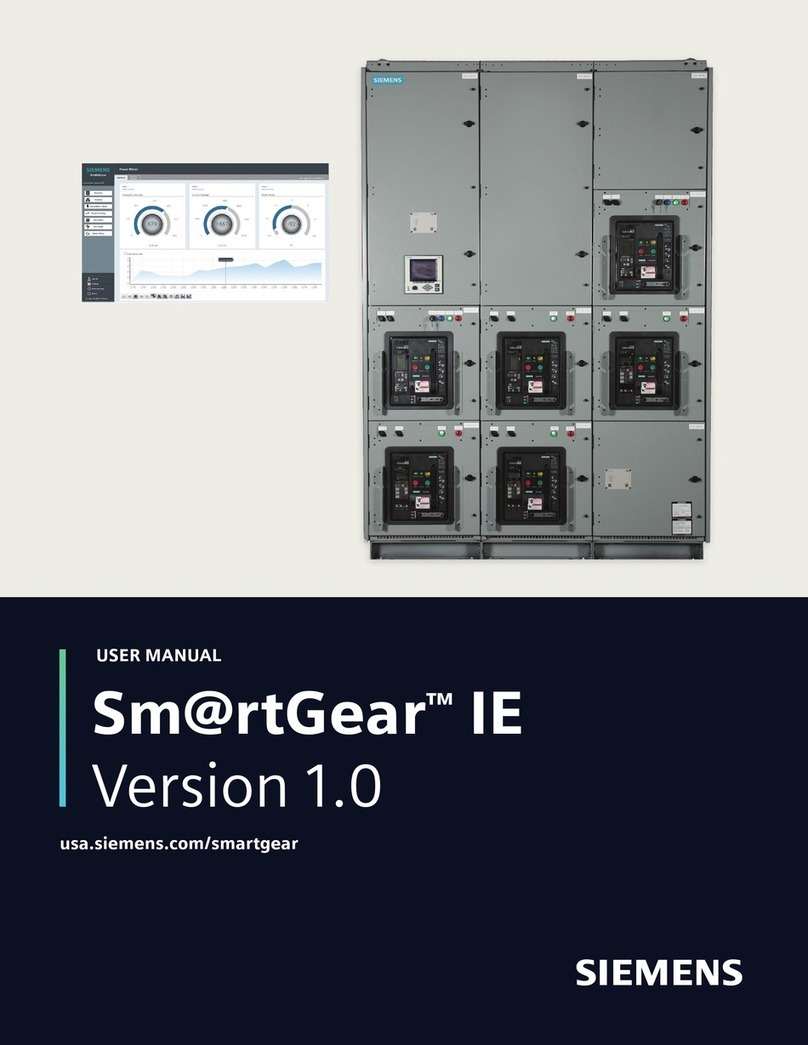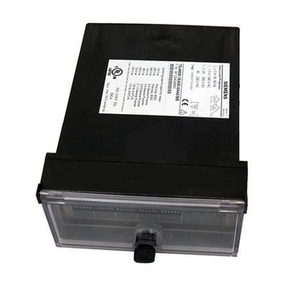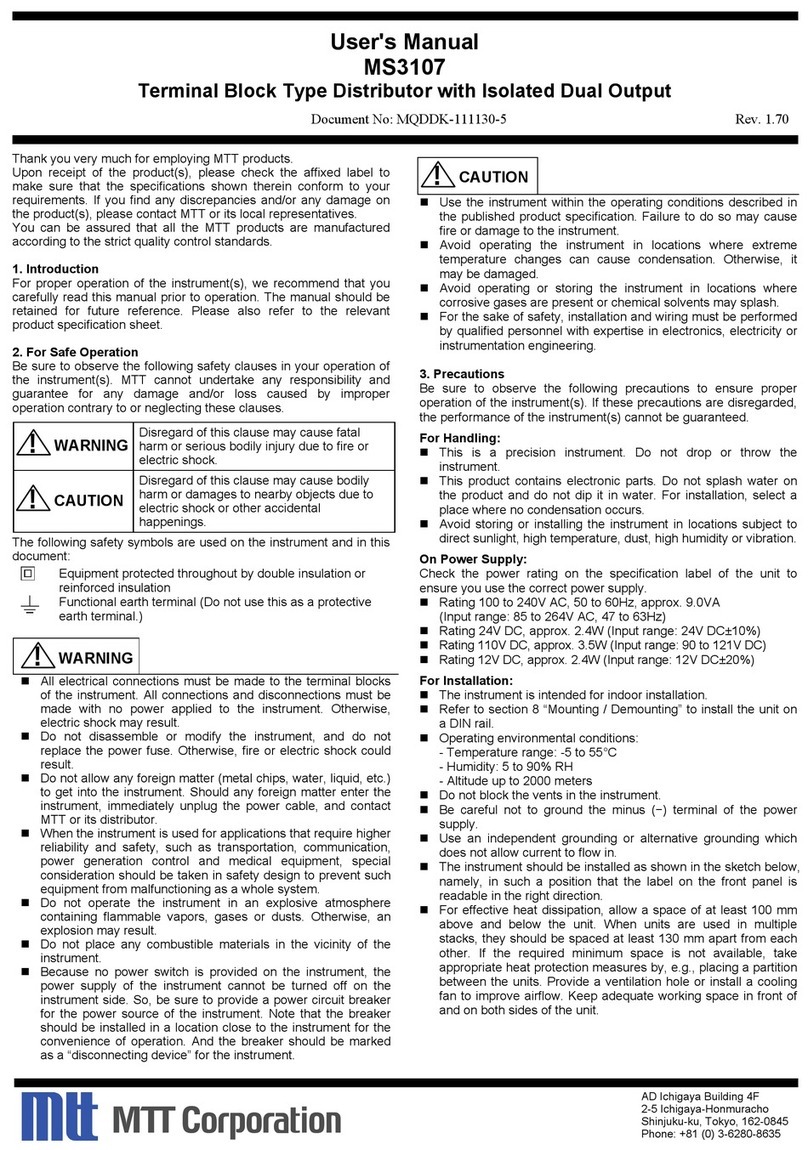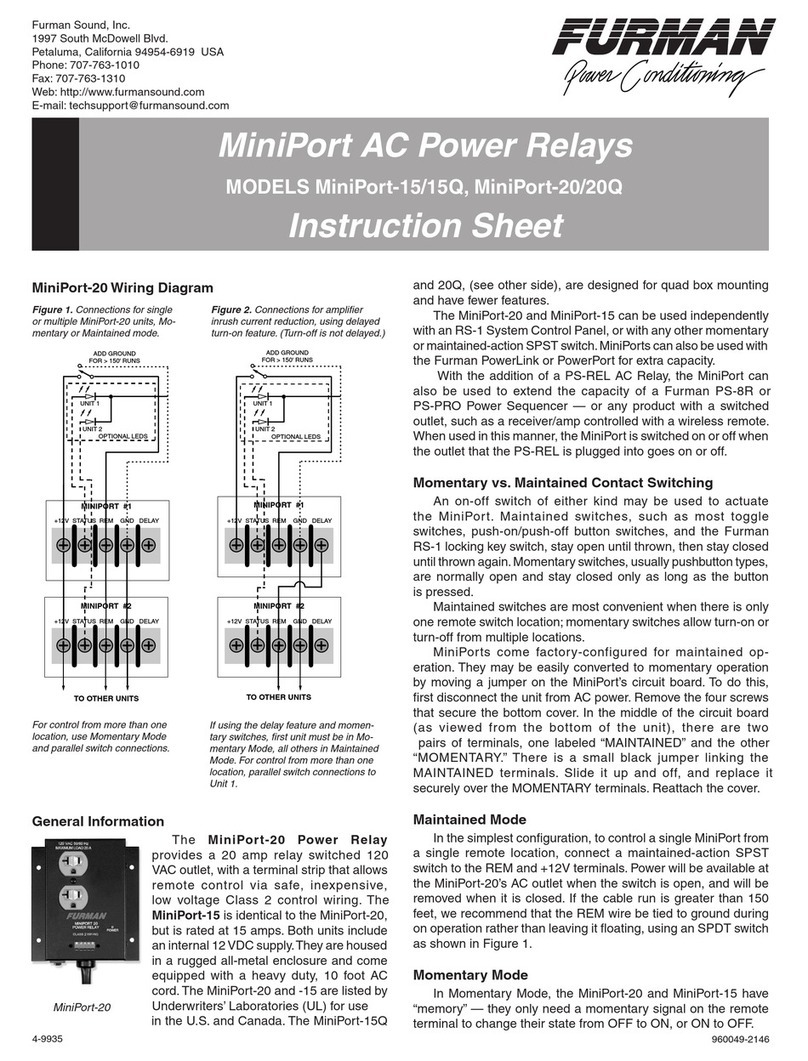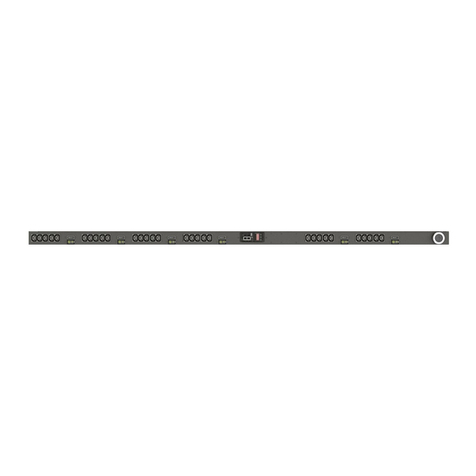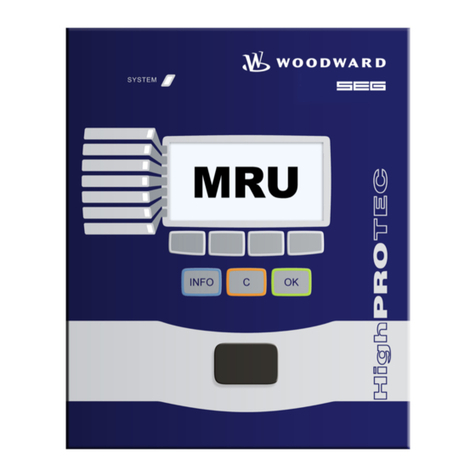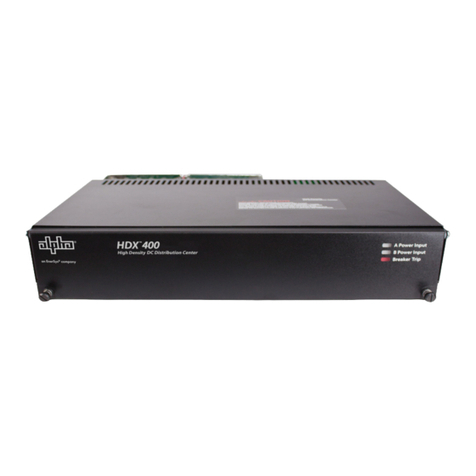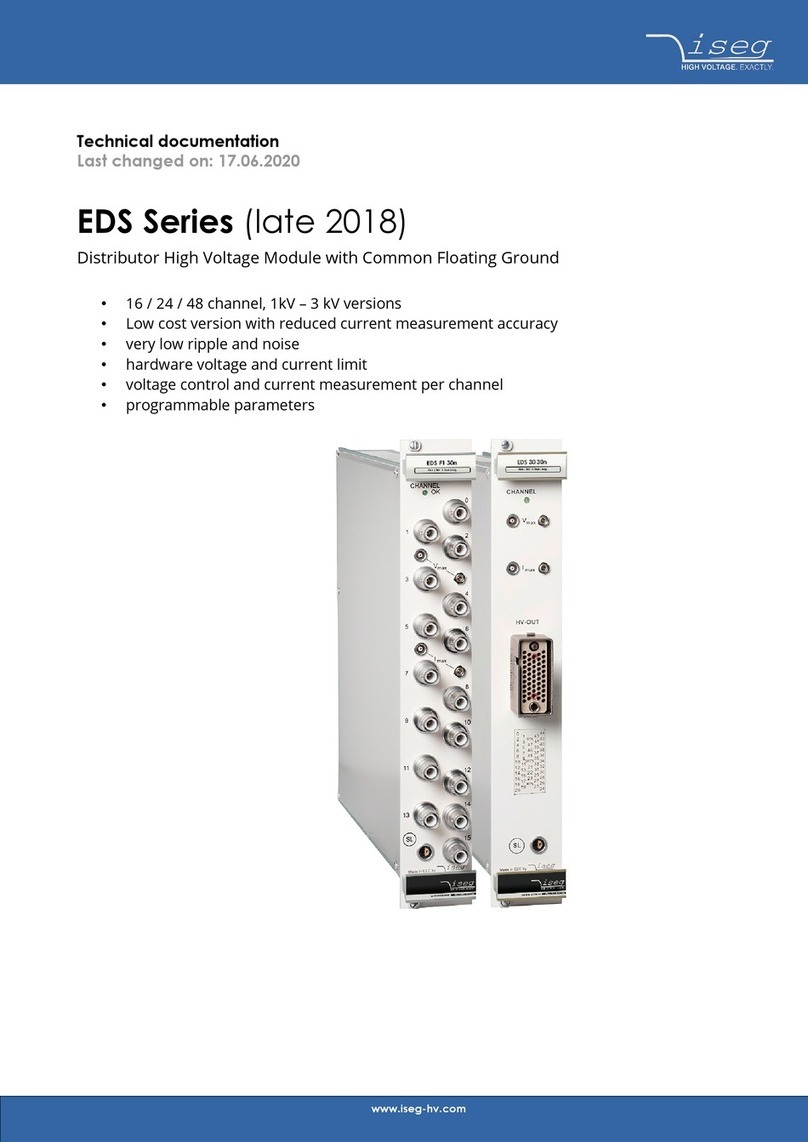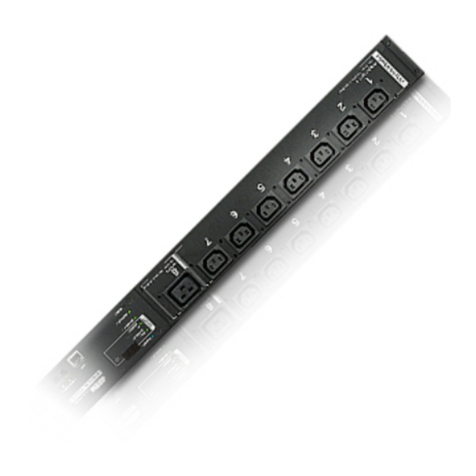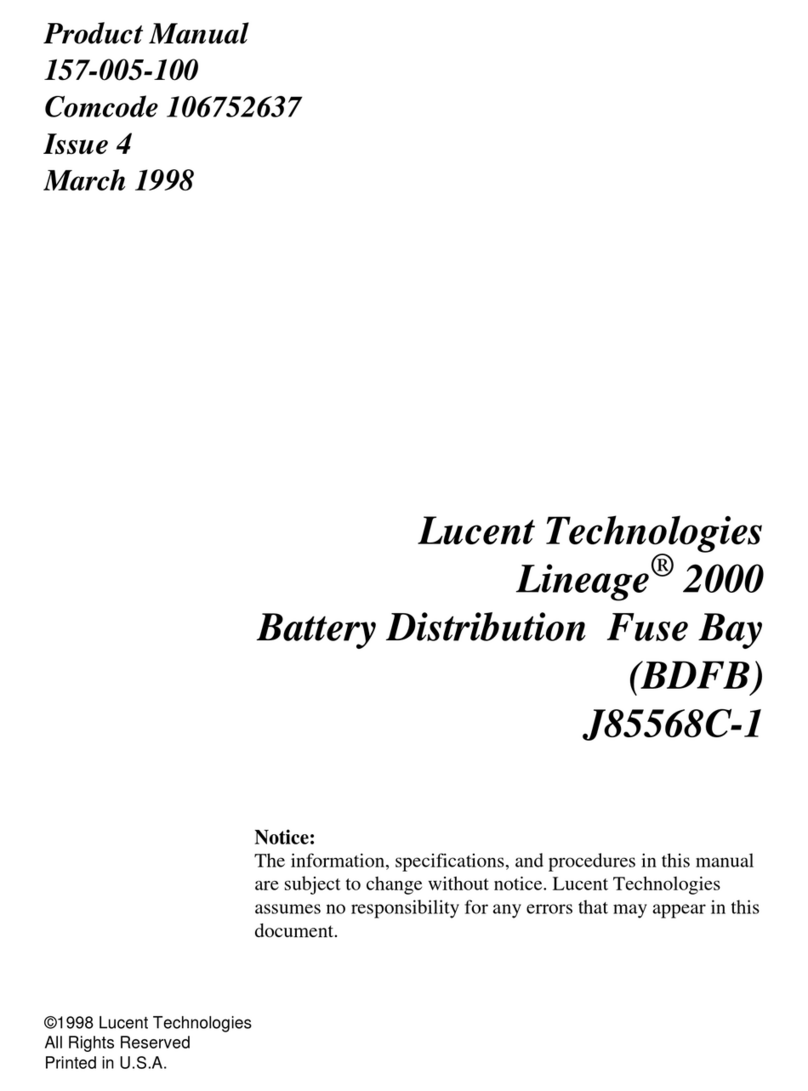SGC DF-2 User manual

Rev.1 (22/10/2015)
DF-2
MEDIUM VOLTAGE SWITCHGEAR
THE MODULAR CONCEPT
Manual integrated surge arrester and
surge arrester monitor
READ THIS DOCUMENT CAREFULLY BEFORE ANY OPERATION
THE SPECIALIST IN MEDIUM VOLTAGE SWITCHGEAR
SwitchGear Company nv -Moorstraat 24 -B-9850 Nevele - Belgium

ii DW603315
© 2015 SGC - SwitchGear Company n.v.
All rights reserved.
The information provided herein may not be reproduced and/or (re)published in any way and by any means (electronic or
mechanical), without the prior, explicit written authorization of SGC nv - SwitchGear Company.
The information provided herein is based on general data concerning the construction, known at the time of publication,
and concerning the qualities of the material and working methods. Consequently, the right to make changes is reserved.
The information contained within is applicable to the standard version of the DF-2 medium-voltage switchgear. Therefore,
SGC nv - SwitchGear Company cannot be held liable for any damage resulting from specifications that differ from the
standard version of the DF-2 medium-voltage switchgear.
The available information has been assembled with the greatest possible care, but SGC nv - SwitchGear Company
cannot be held liable for any mistakes in the information, or the consequences thereof.
The user names, trade names, trademarks, etc., used by SGC nv - SwitchGear Company cannot, in accordance with the
legislation concerning the protection of trademarks, considered to be free.

DW603315 iii
TABLE OF CONTENTS
TABLE OF CONTENTS III
PREFACE IV
INTRODUCTION IV
PICTOGRAMS AND SAFETY SYMBOLS IN AND ON THE MEDIUM VOLTAGE SWITCHGEAR IV
PICTOGRAMS IN THE DOCUMENTATION V
RELATED DOCUMENTATION V
SERVICE AND TECHNICAL SUPPORT VI
GENERAL SAFETY DIRECTIONS AND INSTRUCTIONSVI
INTENDED USE VII
SURGE ARRESTER AND SURGE ARRESTER MONITOR8
1GENERAL DESCRIPTION 8
1.1 LOW VOLTAGE COMPARTMENT 8
1.2 CABLE COMPARTMENT 9
2GENERAL USE 10
3END OF LIFE SURGE ARRESTER 11
3.1 PREPARATION BEFORE DISASSEMBLING 11
3.2 DISASSEMBLY PROCEDURE 11
3.2.1 REMOVING THE DOOR 11
3.2.2 RETRACT THE CIRCUIT BREAKER 12
3.2.3 REMOVE PRE-ASSEMBLY SURGE ARRESTER 13
3.2.4 REPLACEMENT PRE-ASSEMBLY SURGE ARRESTER 15
3.2.5 INSERT THE CIRCUIT BREAKER 17

iv DW603315
PREFACE
Introduction
This document is intended as a reference for qualified and trained operators to install the
medium voltage switchgear in a safe and economical way.
This document uses the term “medium voltage switchgear” to denote a random, but in
actual practice, existing combination of DF-2 functions that, mutually coupled and
connected, constitute a client-specific transformation or distribution station.
In the documentation the words “left”, “right”, “front” and “behind” are used to indicate a
specific part of the medium voltage switchgear. The starting point is always the position of
the operator, standing in front of the medium voltage switchgear, facing the switchgear.
Pictograms and safety symbols in and on the medium voltage
switchgear
Depending on the version, the following pictograms are used on the medium voltage
switchgear:
WARNING
Danger of high voltage
Access to this cubicle is only allowed after this cubicle and both the directly
adjacent cubicles (previous and next one) are de-energized.
WARNING
Drilling prohibited.
Drilling is strictly prohibited on surfaces equipped with this pictogram.

DW603315 v
Pictograms in the documentation
The following pictograms apply to the medium voltage switchgear user documents:
CAUTION!
A procedure that can, if not carried out with the proper care, result in damage to
the medium voltage switchgear, the surrounding area or the environment.
WARNING
High Voltage Danger
CAUTION!
Clamping danger
Notes, suggestions and advice.
Make this cubicle, the next one and the previous cubicle, voltage-free, before
carrying out the work described.
Open the load break switch and the earthing switch before carrying out the work
described in the manual.
Make this cubicle, the next one and the previous cubicle, voltage-free, before
carrying out the work described. Open the load-break switch and the circuit
breaker. Close the earthing switch
Consult the indicated information sources first.
Protect the medium voltage switchgear from water and damp.
Related documentation
The following technical documentation for medium voltage switchgear is available:
•Installation manual DF-2
•User manual DF-2
•User manual VA-2/VAS-2
•User manual Arc-killer SV-25 on VA-2/VAS-2

vi DW603315
Service and technical support
For information concerning specific settings, maintenance or repair work which is not
covered in the manual, please contact SGC - SwitchGear Company nv.
When contacting SGC – Switchgear Company nv, always provide the following
information:
−Cubicle designation and characteristics
−Serial number of the cubicle(s)
General safety directions and instructions
SGC – SwitchGear Company nv does not accept any liability for damage or injury caused
by not (strictly) following the safety directions and instructions, or by negligence during the
installation, use, maintenance, or the repair of the medium voltage switchgear and its
accompanying options.
Depending on specific user circumstances, or installed options, extra safety instructions
may be required. Please contact SGC – SwitchGear Company nv immediately if you
encounter a potential danger during the operation of the medium voltage switchgear.
The owner/operator of the medium voltage switchgear is fully responsible at all
times for following the locally applicable safety directions and guidelines.
User manual
•Anyone who uses or operates the medium voltage switchgear, must be familiar with
the contents of the user manual, and follow the directions contained within very
closely. The owner/operator must educate the users in accordance with the user
manual and obey all directions and instructions.
•Never change the order of the required actions.
•Always keep the user manual in the vicinity of the medium voltage switchgear.
Pictograms and safety symbols
The pictograms, symbols and instructions applied to the medium voltage switchgear are a
part of the safety equipment. They may therefore not be covered or removed, and must be
present and clearly readable throughout the entire lifespan of the medium voltage
switchgear.
•Replace or repair unreadable or damaged pictograms, symbols and instruction
immediately. Therefore, contact SGC – SwitchGear Company nv.
Operators
The execution of the work described (transport, installation, use and maintenance) is
strictly reserved for trained and qualified operators, who are familiar with the dangers that
can occur when operating medium voltage switchgear. Temporary staff and personnel in
training may not operate the medium voltage switchgear under any circumstances.

DW603315 vii
Technical specifications
•Technical specifications may not be changed.
•Modification of the medium voltage switchgear (or parts thereof) is not permitted.
Transport, storage, installation, operation and maintenance
See corresponding documents:
•“Safety guidelines – transport”
•“Safety guidelines – storage”
•“Safety guidelines – installation”
•“Safety guidelines – operation”
•“Safety guidelines – maintenance”
Cubicles that fell over or have otherwise been damaged always HAVE TO BE
RETURNED to SGC - SwitchGear Company for a checkup
Intended use
The medium voltage switchgear is designed exclusively for use as transformation or
distribution stations, in accordance to the specifications and conditions provided by SGC –
SwitchGear Company nv. Any other or further use is not in accordance with the intended
use.1
SGC – SwitchGear Company nv does not accept any liability for damage(s) or injuries
resulting from deviation(s) of the intended use.
The medium voltage switchgear complies with the current norms and guidelines. See:
Technical Brochure
•Only use the medium voltage switchgear in technically perfect condition, in
accordance with the intended use described above.
Leave the sealed connections intact, at all times. Breaking the sealed connections
irrevocably voids any guarantee claims.
1The “Intended use” as defined in EN 292-1 “is the use for which the technical product is suited as specified
by the manufacturer including his directions in the sales brochure.” In case of doubt, it is the use that can be
deduced from the construction, the model and the function of the technical product that is considered normal
use. Operating the product within the limits of its intended use also involves observing the instructions in the
user manual.

DW603315 8
SURGE ARRESTER AND SURGE ARRESTER MONITOR
1 GENERAL DESCRIPTION
The surge arrester and the surge arrester monitor are both integrated in the
corresponding cubicle. The surge arrester is mounted in the cable compartment; the
surge arrester monitor is integrated in the low voltage compartment of the cubicle.
1.1 Low voltage compartment
The leakage current of the surge arrester is measured in a continuous manner. The
recorded values are displayed in the LV compartment of the corresponding cubicle
(Figure 1). The measurement is performed by means of a mA-meter per phase.
Figure 1: Front panel DF-D cubicle

9 DW603315
1.2 Cable compartment
The surge arrester is mounted in the cable compartment between the current
transformer and the capacitive insulator.
Figure 2: Front view DF-D, door removed
Figure 3: Detailed view cable compartment
Surge arrester

10 DW603315
2 GENERAL USE
The leakage current of each individual surge arrester is monitored (Figure 4). During
the lifespan of the surge arrester at rated voltage, three different phases can be
distinguished:
•Green zone: leakage current is less than 2mA; surge arrester is in good
condition
•Orange zone: measured leakage current is situated between 2mA and 5mA;
ageing of the surge arrester is started, replacement of the surge arrester is
advised.
•Red zone: measured leakage current exceeds 5mA; replacement of the surge
arrester should be performed.
Figure 4: Detailed view front panel on mA-meters

11 DW603315
3 END OF LIFE SURGE ARRESTER
When the surge arrester is at the end of its lifespan, following steps should be made
to perform the replacement in a safe and efficient manner.
3.1 Preparation before disassembling
The following preparations must be made before starting to disassemble the cubicle.
Make that the entire medium voltage switchgear and the circuit breaker is de-
energized and grounded.
•On the particular unit, open both the load-break switch and the
circuit breaker.
•The HV cable connection should be de-energized as well.
•Close the earthing switch on the particular unit.
3.2 Disassembly procedure
3.2.1 Removing the door
•Verify that the earthing switch is in
closed position.
•Turn the locking latch, located at
the middle of the door (Figure 5).
•Grab the door using the handles
with both hands.
•Carefully lift the door out.
•Place the door where there is no
risk of it being damaged.
Figure 5: Removing the door

12 DW603315
3.2.2 Retract the circuit breaker
If an arc-killer is present, make sure that the arc-killer is in grounded
position and that the coupling between arc-killer and cubicle is disconnected
before retracting the circuit breaker[2
]!
Figure 6: Removing the circuit breaker from the cable compartment
Make that the entire medium voltage switchgear and the circuit
breaker is de-energized and grounded.
•Loosen the top connections of the circuit breaker
oLoosen the nuts (Figure 6D)
oRemove the washers (Figure 6B and C)
oRemove the hexagonal tap bolt (Figure 6A)
•Loosen the bottom connections of the circuit breaker
oLoosen the nuts (Figure 6H)
oRemove the washers (Figure 6G and F)
oRemove the hexagonal tap bolt (Figure 6E)
The flexible braids must stay on the circuit breaker!
•Disconnect any low voltage connector present on the circuit breaker (Figure
6I)
•Carefully retract the circuit breaker out of the cable compartment, avoid
damage on the earthing contact (Figure 6J).
2Detailed procedure described in user manual arc-killer SV-25 on VA-2/VAS-2

13 DW603315
3.2.3 Remove pre-assembly surge arrester
Once the circuit breaker is removed from the cable compartment, the pre-assembly
of the surge arrester can be disconnected.
Figure 7: Cable compartment,
VCB retracted
Figure 8: Remove copper connection CT - Insulator
•Loosen the connection to the current transformer
oLoosen the hexagonal tap bolt (Figure 8A)
oRemove the washers (Figure 8B and C)
•Loosen the connection to the surge arrester
oLoosen the nut (Figure 8D)
oRemove the washers (Figure 8E and F)
•Loosen the connection to the capacitive insulator
oLoosen the hexagonal tap bolt (Figure 8G)
oRemove the washers (Figure 8H)
•Remove the copper connection between the current transformer and the
capacitive insulator Figure 8 I, J, K.
Continue as described for the remaining two phases.

14 DW603315
Once the connection copper between current transformer and capacitive insulator is
removed, loosening of the pre-assembly of the surge arrester can be started.
Unplug the connector (Figure 9A) located at the front, afterwards remove the nuts
(Figure 9B) and the washers (Figure 9C).
Figure 9: Remove of the pre-assembly surge arrester

15 DW603315
3.3 Disassembly procedure
3.3.1 Replacement pre-assembly surge arrester
The replacement can be done by performing the opposite operation. Fix the pre-
assembly using the nuts (Figure 10B) and the washers (Figure 10C). Replug the
connector (Figure 10A) located at the front.
Figure 10: Replacement pre-assembly surge arrester

16 DW603315
Once the pre-assembly is back into place, the connection copper between CT and
the capacitive insulator can be mounted.
•Mount the connection to the current transformer
oPlace the washers (Figure 12B and C) on the hexagonal tap bolt
(Figure 12A)
oPlace the combination in the copper connection (Figure 12I) and the
copper space (Figure 12J).
oFix into the current transformer with a torque of 35Nm.
•Mount the connection to the surge arrester
oPlace the washers (Figure 12
E and F)
and the nut (Figure 12
D) on the surge
arrester
oFix with a torque of 25Nm, do not apply
any force on lower nut of the surge
arrester (Figure 11)
Figure 11: Prohibited action
•Mount the connection to the capacitive insulator
oPlace the washers (Figure 12H) on the hexagonal tap bolt (Figure 12G)
oPlace the combination in the copper connection (Figure 12I) and the
copper space (Figure 12K).
oFix into the capacitive insulator with a torque of 35Nm.
Figure 12: Fixation copper connection CT-Insulator

17 DW603315
3.3.2 Insert the circuit breaker
If an arc-killer is present, make sure that the arc-killer is in grounded
position and that the coupling between arc-killer and cubicle is disconnected
before retracting the circuit breaker[2]!
Figure 13: Entering the circuit breaker
Place the circuit breaker with its rear wheels in the transport rails and enter the circuit
breaker against the rear stop guides.
•Connect any low voltage connector present on the circuit breaker (Figure 13I)
•Mount the top connection of the circuit breaker to the copper contact
oPlace the washer (Figure 13B) on the hexagonal tap bolt (Figure 13A)
oPlace the whole through the copper contact and the flexible braid.
oPlace the washer (Figure 13C) and the nut (Figure 13D) on the
hexagonal tap bolt (Figure 13A)
oFix the connection with a torque of 35Nm.
•Mount the lower connection of the circuit breaker to the copper contact
oPlace the washer (Figure 13F) on the hexagonal tap bolt (Figure 13E)
oPlace the whole through the copper contact and the flexible braid.
oPlace the washer (Figure 13G) and the nut (Figure 13H) on the
hexagonal tap bolt (Figure 13E)
oFix the connection with a torque of 35Nm.
After the door is fit back onto the cubicle and the padlock back into place, the
switchgear can be put back in operation taking into account the procedure described
in the manual.
Other manuals for DF-2
2
Table of contents
Popular Power Distribution Unit manuals by other brands
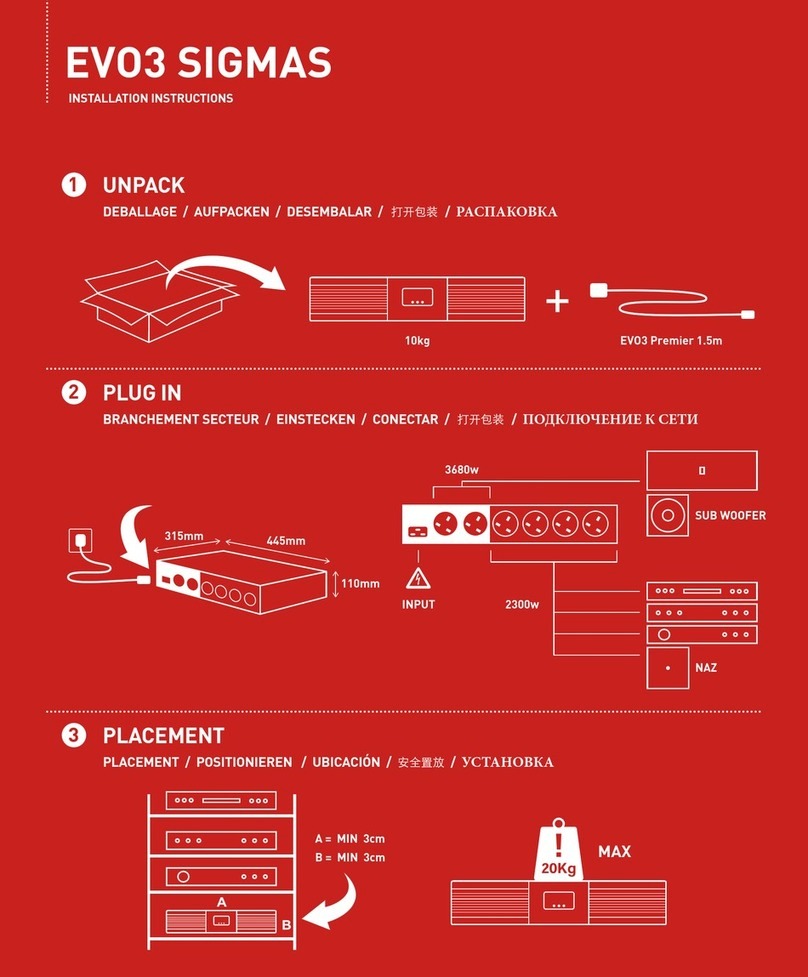
Isotek
Isotek EVO3 SIGMAS installation instructions
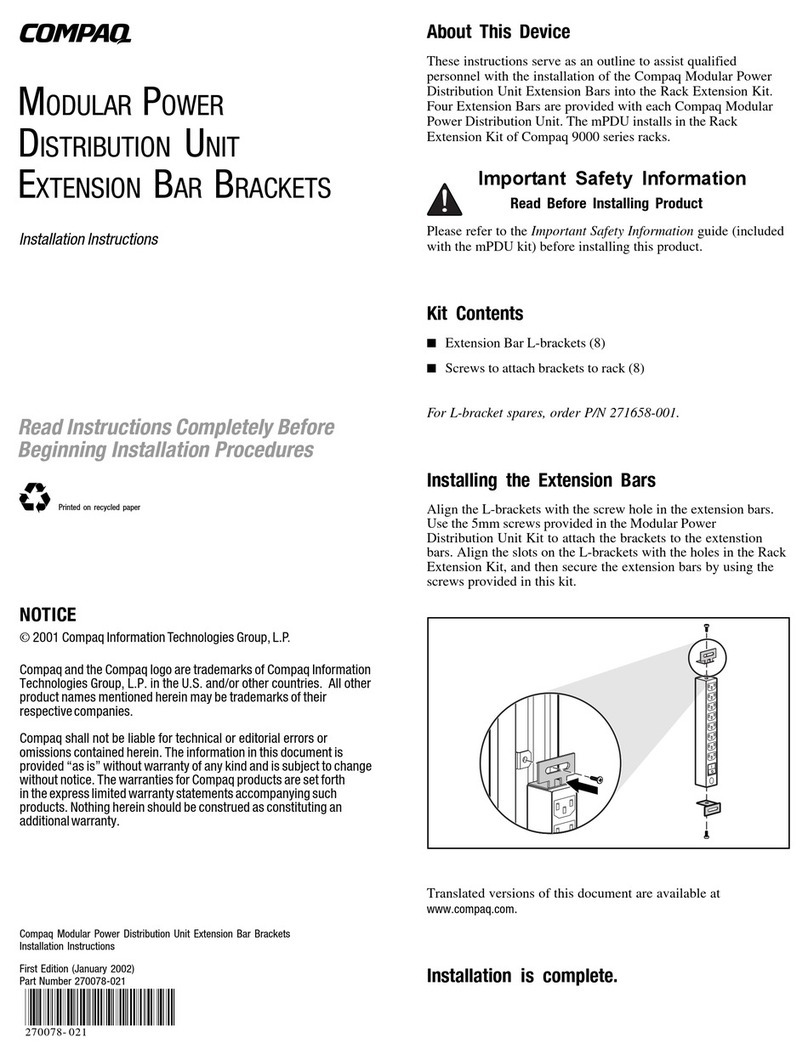
Compaq
Compaq 252663-B24 - PDU Power Distribution Strip installation instructions
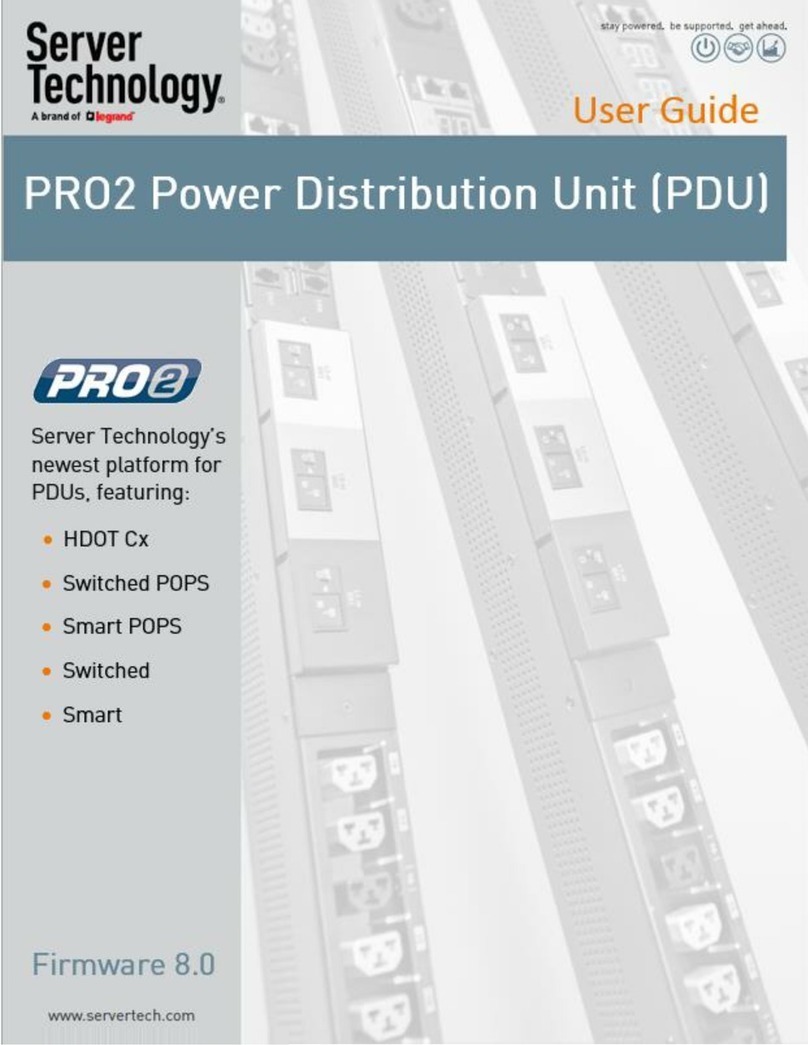
Server Technology
Server Technology switched pro2 user guide
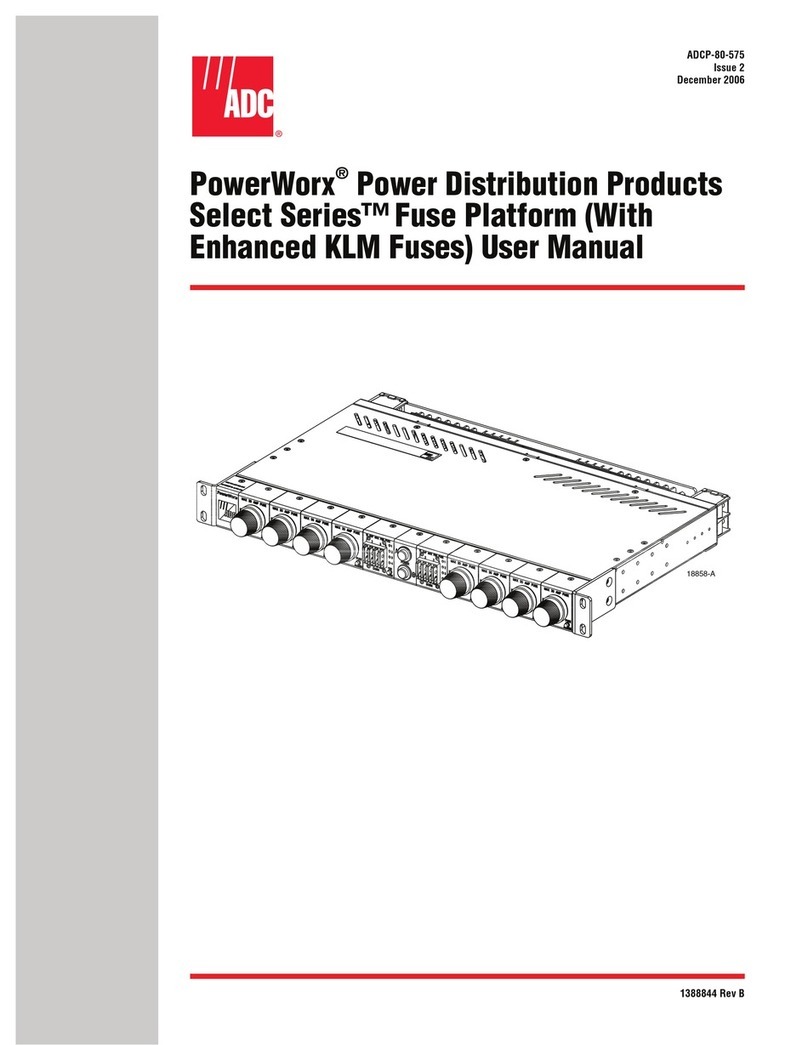
ADC
ADC PowerWorx Power Distribution user manual

Huawei
Huawei PDU8000 Series user manual

Tripp Lite
Tripp Lite PDUMH20HVNET owner's manual
